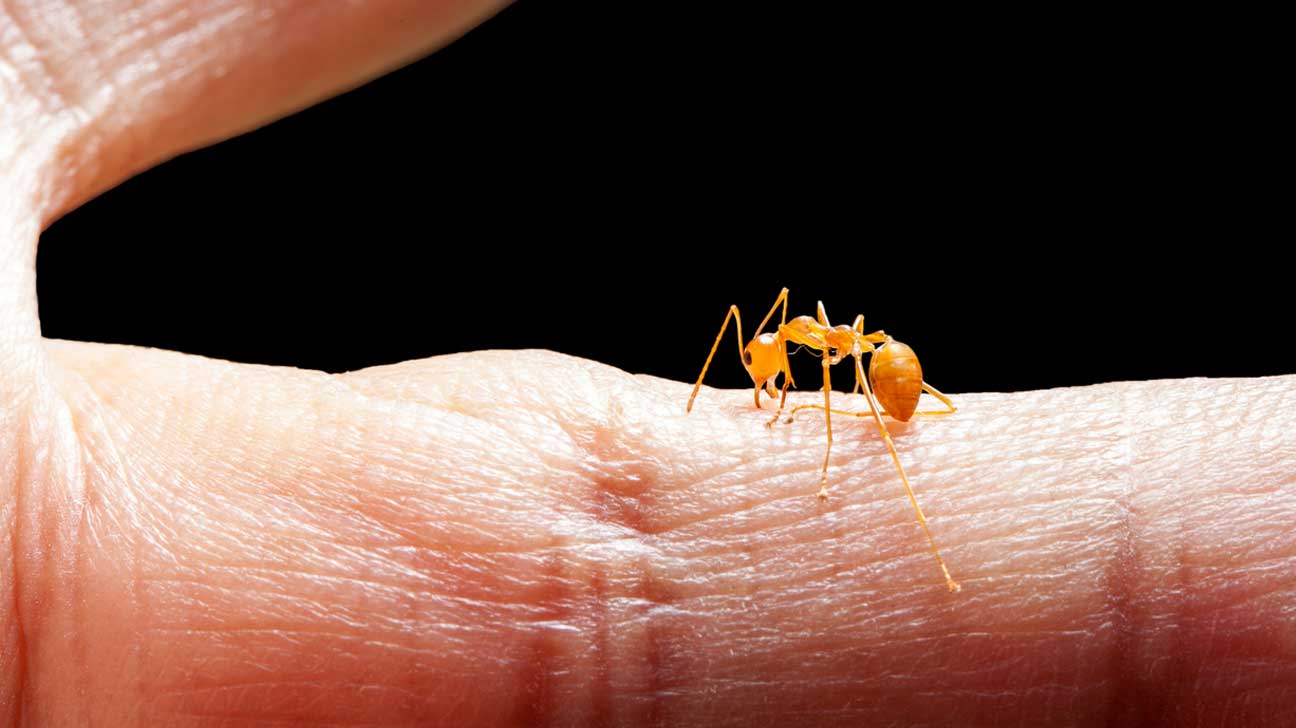Scientists Harness Fire Ant Venom To Treat Psoriasis
Fire ants are such a pain. In addition to all the jolly eating, they are major pests and have no regard for boundaries. Their day (and night) job includes two things- invade/intrude and sting.
However, scientists have now finally found these annoying critters to be useful to humans. Researchers at Emory and Case Western have developed two experimental compounds inspired by the fire ant that appear promising in treating psoriasis, which causes painful thickening and rashes.
Psoriasis is an autoimmune chronic inflammatory skin condition that affects an estimated 2.5–6 million patients in the U.S., or about 1–2% of the population. Topical treatments—primarily corticosteroids—have been the mainstay of managing mild to moderate psoriasis for 50 years. Biologic therapies aren’t suitable for most patients with mild to moderate disease. They are expensive, and can also result in systemic immunosuppression. Unfortunately, long-term use of topical steroids can also lead to resistance, and may cause cutaneous atrophy.
Fire ants are an aggressive species which can sting with a very painful poison called solenopsin that feels to humans as if they have been burned, giving the insects their name.
The new compounds synthesized by scientists were developed from
these solenopsins which are chemically very similar to a particular molecule in skincare products.“We believe that solenopsin analogs are contributing to full restoration of the barrier function in the skin,” said lead author Jack Arbiser, professor of dermatology at Emory. “Emollients can soothe the skin in psoriasis, but they are not sufficient for restoration of the barrier.”
Solenepsin is the alkaloidal component and the main toxic component of fire ant (Solenopsis invicta) venom. For this study the team of researchers used solenopsin analogs or similar to act as ceramides over the skin but not be broken down to sphingosine-1-phosphate (S1P) to cause the skin damage. They tested this theory on a special strain of laboratory mice called the KC-Tie2 mouse. Solenepsin preparations were applied over the skin of these psoriatic mice for 28 days. It was seen that the severity of the inflammation reduced with the application. This restored the barrier function of the skin and also reduced inflammation.
The researchers synthesized two forms of solenepsin called S12 and S14. With their application one of the hallmark features of psoriasis – infiltration with T cells seemed to reduce by 47–63 percent. Treatment with S14 also reduced CD8+ T cells by 47 percent and CD11c+ dendritic cell infiltration by 18 percent.
Results showed that those mice treated with solenepsin showed reduction in two main features of psoriasis including acanthosis and hyperkeratosis. Skin thickness in the psoriatic mice reduced by around 30 percent. The treatment also reduced the expression of genes that usually get over activated with the use of steroids and UV lights.
Derivatives of the venom have not yet been tested for systemic toxicity, but even if they were found to be dangerous they could still be used to treat skin diseases, just as botulinum toxin (botox) is.
However, if all is well, then the scientists intend to test the treatment on people is down the road.
































